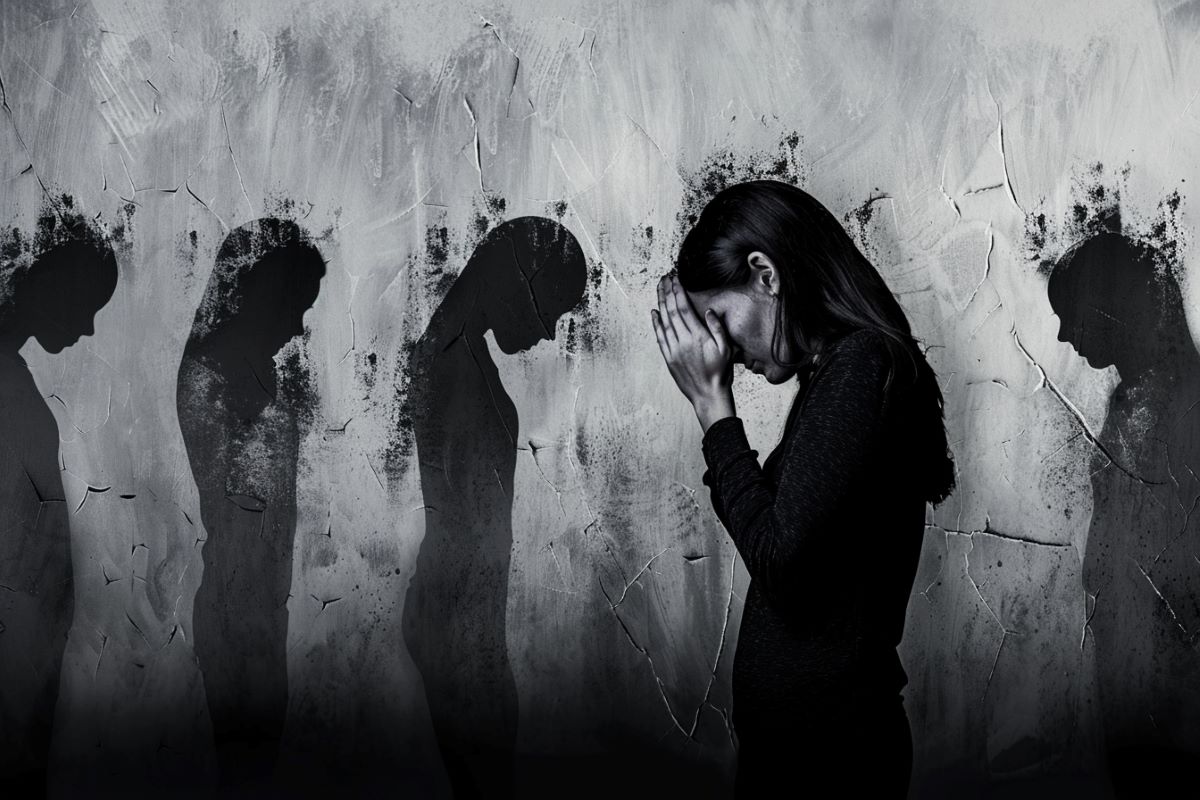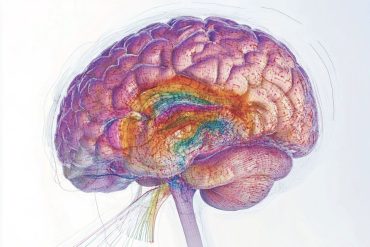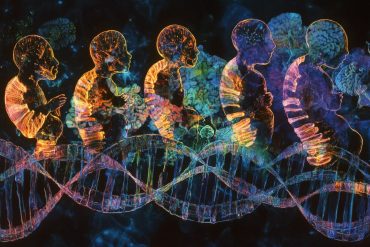Summary: Researchers identified six depression subtypes through brain imaging and machine learning, revealing tailored treatment options. This breakthrough in precision psychiatry can improve treatment outcomes by matching patients with the most effective therapies based on their brain activity patterns.
The study aims to move beyond the trial-and-error method of prescribing antidepressants. This personalized approach could revolutionize mental health care by ensuring the right treatment is chosen the first time.
Key Facts:
- Six Depression Biotypes: Identified using brain imaging and machine learning, each subtype responds differently to treatments.
- Precision Psychiatry: Tailored treatments based on brain activity can improve outcomes for depression patients.
- Study Publication: Findings highlight the importance of personalized mental health care.
Source: Stanford
In the not-too-distant future, a screening assessment for depression could include a quick brain scan to identify the best treatment.
Brain imaging combined with machine learning can reveal subtypes of depression and anxiety, according to a new study led by researchers at Stanford Medicine.
The study, to be published June 17 in the journal Nature Medicine, sorts depression into six biological subtypes, or “biotypes,” and identifies treatments that are more likely or less likely to work for three of these subtypes.
Better methods for matching patients with treatments are desperately needed, said the study’s senior author, Leanne Williams, PhD, the Vincent V.C. Woo Professor, a professor of psychiatry and behavioral sciences, and the director of Stanford Medicine’s Center for Precision Mental Health and Wellness. Williams, who lost her partner to depression in 2015, has focused her work on pioneering the field of precision psychiatry.
Around 30% of people with depression have what’s known as treatment-resistant depression, meaning multiple kinds of medication or therapy have failed to improve their symptoms. And for up to two-thirds of people with depression, treatment fails to fully reverse their symptoms to healthy levels.
That’s in part because there’s no good way to know which antidepressant or type of therapy could help a given patient. Medications are prescribed through a trial-and-error method, so it can take months or years to land on a drug that works — if it ever happens. And spending so long trying treatment after treatment, only to experience no relief, can worsen depression symptoms.
“The goal of our work is figuring out how we can get it right the first time,” Williams said. “It’s very frustrating to be in the field of depression and not have a better alternative to this one-size-fits-all approach.”
Biotypes predict treatment response
To better understand the biology underlying depression and anxiety, Williams and her colleagues assessed 801 study participants who were previously diagnosed with depression or anxiety using the imaging technology known as functional MRI, or fMRI, to measure brain activity.
They scanned the volunteers’ brains at rest and when they were engaged in different tasks designed to test their cognitive and emotional functioning. The scientists narrowed in on regions of the brain, and the connections between them, that were already known to play a role in depression.
Using a machine learning approach known as cluster analysis to group the patients’ brain images, they identified six distinct patterns of activity in the brain regions they studied.
The scientists also randomly assigned 250 of the study participants to receive one of three commonly used antidepressants or behavioral talk therapy.
Patients with one subtype, which is characterized by overactivity in cognitive regions of the brain, experienced the best response to the antidepressant venlafaxine (commonly known as Effexor) compared with those who have other biotypes.
Those with another subtype, whose brains at rest had higher levels of activity among three regions associated with depression and problem-solving, had better alleviation of symptoms with behavioral talk therapy.
And those with a third subtype, who had lower levels of activity at rest in the brain circuit that controls attention, were less likely to see improvement of their symptoms with talk therapy than those with other biotypes.
The biotypes and their response to behavioral therapy make sense based on what they know about these regions of the brain, said Jun Ma, MD, PhD, the Beth and George Vitoux Professor of Medicine at the University of Illinois Chicago and one of the authors of the study.
The type of therapy used in their trial teaches patients skills to better address daily problems, so the high levels of activity in these brain regions may allow patients with that biotype to more readily adopt new skills.
As for those with lower activity in the region associated with attention and engagement, Ma said it’s possible that pharmaceutical treatment to first address that lower activity could help those patients gain more from talk therapy.
“To our knowledge, this is the first time we’ve been able to demonstrate that depression can be explained by different disruptions to the functioning of the brain,” Williams said. “In essence, it’s a demonstration of a personalized medicine approach for mental health based on objective measures of brain function.”
In another recently published study, Williams and her team showed that using fMRI brain imaging improves their ability to identify individuals likely to respond to antidepressant treatment. In that study, the scientists focused on a subtype they call the cognitive biotype of depression, which affects more than a quarter of those with depression and is less likely to respond to standard antidepressants.
By identifying those with the cognitive biotype using fMRI, the researchers accurately predicted the likelihood of remission in 63% of patients, compared with 36% accuracy without using brain imaging. That improved accuracy means that providers may be more likely to get the treatment right the first time.
The scientists are now studying novel treatments for this biotype with the hope of finding more options for those who don’t respond to standard antidepressants.
Further explorations of depression
The different biotypes also correlate with differences in symptoms and task performance among the trial participants. Those with overactive cognitive regions of the brain, for example, had higher levels of anhedonia (inability to feel pleasure) than those with other biotypes; they also performed worse on executive function tasks. Those with the subtype that responded best to talk therapy also made errors on executive function tasks but performed well on cognitive tasks.
One of the six biotypes uncovered in the study showed no noticeable brain activity differences in the imaged regions from the activity of people without depression. Williams believes they likely haven’t explored the full range of brain biology underlying this disorder — their study focused on regions known to be involved in depression and anxiety, but there could be other types of dysfunction in this biotype that their imaging didn’t capture.
Williams and her team are expanding the imaging study to include more participants. She also wants to test more kinds of treatments in all six biotypes, including medicines that haven’t traditionally been used for depression.
Her colleague Laura Hack, MD, PhD, an assistant professor of psychiatry and behavioral sciences, has begun using the imaging technique in her clinical practice at Stanford Medicine through an experimental protocol. The team also wants to establish easy-to-follow standards for the method so that other practicing psychiatrists can begin implementing it.
“To really move the field toward precision psychiatry, we need to identify treatments most likely to be effective for patients and get them on that treatment as soon as possible,” Ma said.
“Having information on their brain function, in particular the validated signatures we evaluated in this study, would help inform more precise treatment and prescriptions for individuals.”
Researchers from Columbia University; Yale University School of Medicine; the University of California, Los Angeles; UC San Francisco; the University of Sydney; the University of Texas MD Anderson; and the University of Illinois Chicago also contributed to the study.
Datasets in the study were funded by the National Institutes of Health (grant numbers R01MH101496, UH2HL132368, U01MH109985 and U01MH136062) and by Brain Resource Ltd.
About this depression research news
Author: Lisa Kim
Source: Stanford
Contact: Lisa Kim – Stanford
Image: The image is credited to Neuroscience News
Original Research: Open access.
“Personalized brain circuit scores identify clinically distinct biotypes in depression and anxiety” by Leanne Williams et al. Nature Medicine
Abstract
Personalized brain circuit scores identify clinically distinct biotypes in depression and anxiety
There is an urgent need to derive quantitative measures based on coherent neurobiological dysfunctions or ‘biotypes’ to enable stratification of patients with depression and anxiety.
We used task-free and task-evoked data from a standardized functional magnetic resonance imaging protocol conducted across multiple studies in patients with depression and anxiety when treatment free (n = 801) and after randomization to pharmacotherapy or behavioral therapy (n = 250).
From these patients, we derived personalized and interpretable scores of brain circuit dysfunction grounded in a theoretical taxonomy.
Participants were subdivided into six biotypes defined by distinct profiles of intrinsic task-free functional connectivity within the default mode, salience and frontoparietal attention circuits, and of activation and connectivity within frontal and subcortical regions elicited by emotional and cognitive tasks.
The six biotypes showed consistency with our theoretical taxonomy and were distinguished by symptoms, behavioral performance on general and emotional cognitive computerized tests, and response to pharmacotherapy as well as behavioral therapy.
Our results provide a new, theory-driven, clinically validated and interpretable quantitative method to parse the biological heterogeneity of depression and anxiety.
Thus, they represent a promising approach to advance precision clinical care in psychiatry.







